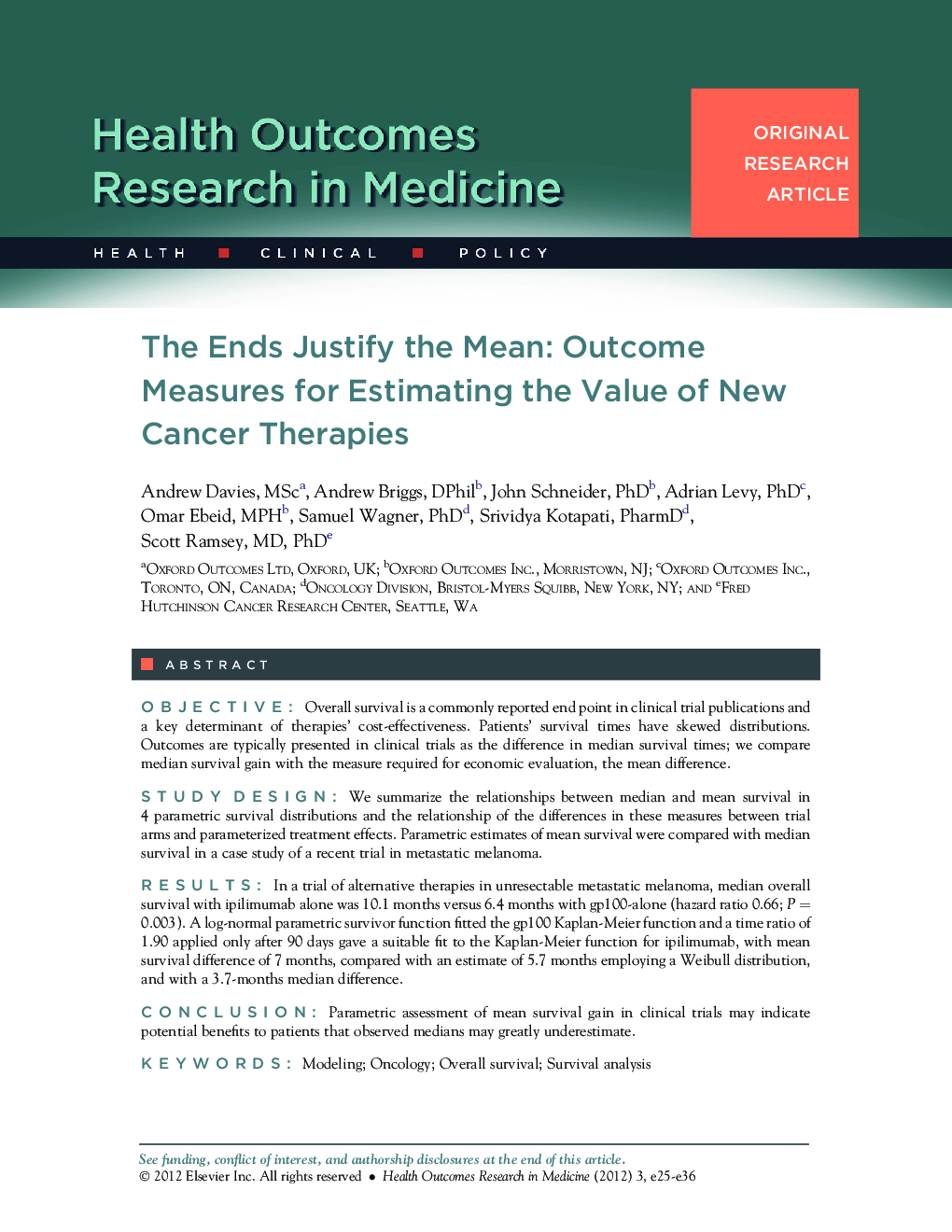| Article ID | Journal | Published Year | Pages | File Type |
|---|---|---|---|---|
| 1074838 | Health Outcomes Research in Medicine | 2012 | 12 Pages |
ObjectiveOverall survival is a commonly reported end point in clinical trial publications and a key determinant of therapies’ cost-effectiveness. Patients’ survival times have skewed distributions. Outcomes are typically presented in clinical trials as the difference in median survival times; we compare median survival gain with the measure required for economic evaluation, the mean difference.Study DesignWe summarize the relationships between median and mean survival in 4 parametric survival distributions and the relationship of the differences in these measures between trial arms and parameterized treatment effects. Parametric estimates of mean survival were compared with median survival in a case study of a recent trial in metastatic melanoma.ResultsIn a trial of alternative therapies in unresectable metastatic melanoma, median overall survival with ipilimumab alone was 10.1 months versus 6.4 months with gp100-alone (hazard ratio 0.66; P = 0.003). A log-normal parametric survivor function fitted the gp100 Kaplan-Meier function and a time ratio of 1.90 applied only after 90 days gave a suitable fit to the Kaplan-Meier function for ipilimumab, with mean survival difference of 7 months, compared with an estimate of 5.7 months employing a Weibull distribution, and with a 3.7-months median difference.ConclusionParametric assessment of mean survival gain in clinical trials may indicate potential benefits to patients that observed medians may greatly underestimate.
